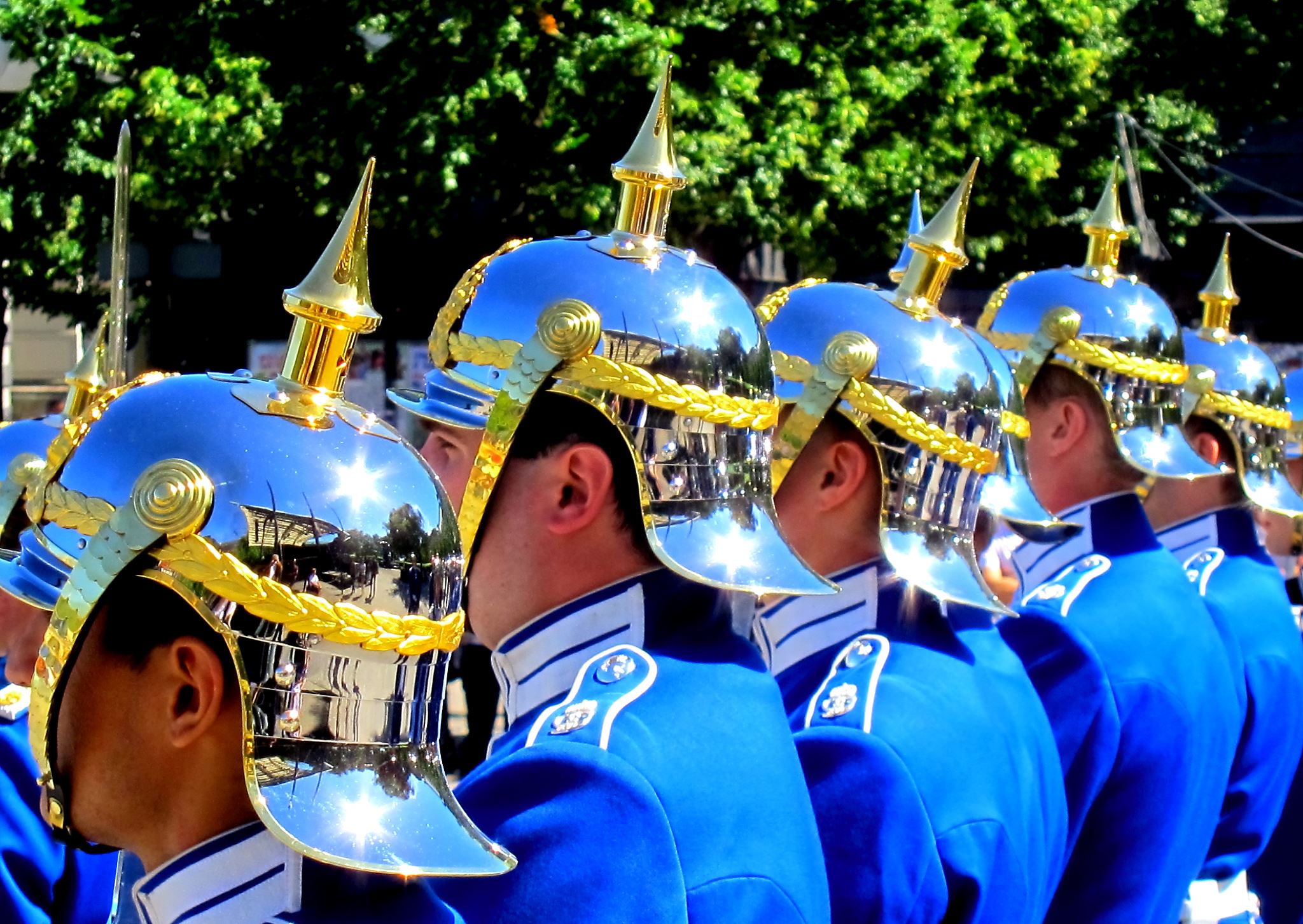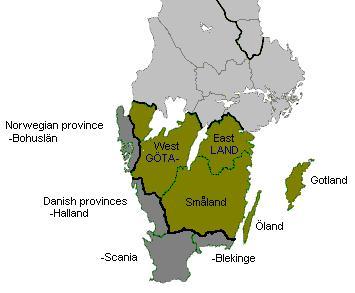|
Östergötlands Storregemente
''Östergötlands storregemente'' or ''Landsregementet i Östergötland'' (Östergötland Grand Regiment, Regiment of the Land in Östergötland) was one of the nine grand regiments organized by Gustavus Adolphus in the late 1610s and split into smaller regiments in the 1620s. History Raised in Götaland from smaller units of 500 men called '' fänikor'', more specifically from the province of Östergötland and in the county of Jönköping, in 1618 and counting 3,000 men (at the time, it counted 2,176 men). The grand regiment was in turn organized into three field regiments (''fältregementen'') and a cavalry regiment, thus actually being more like a brigade in spite of the name. The regiment did not take part in any campaign during its short lifetime. The grand regiments of Sweden where reorganized during the early 1620s to consist of three field regiments, each of eight companies of 150 men, thus making the total number 3,600 soldiers per grand regiment. It is unsure wheth ... [...More Info...] [...Related Items...] OR: [Wikipedia] [Google] [Baidu] |
Gustavus Adolphus
Gustavus Adolphus (9 December Old_Style_and_New_Style_dates">N.S_19_December.html" ;"title="Old_Style_and_New_Style_dates.html" ;"title="/nowiki>Old Style and New Style dates">N.S 19 December">Old_Style_and_New_Style_dates.html" ;"title="/nowiki>Old Style and New Style dates">N.S 19 December15946 November Old_Style_and_New_Style_dates.html" ;"title="/nowiki>Old Style and New Style dates">N.S 16 November] 1632), also known in English as Gustav II Adolf or Gustav II Adolph, was King of Sweden from 1611 to 1632, and is credited for the rise of Swedish Empire, Sweden as a great European power ( sv, Stormaktstiden). During his reign, Sweden became one of the primary military forces in Europe during the Thirty Years' War, helping to determine the political and religious balance of power in Europe. He was formally and posthumously given the name Gustavus Adolphus the Great ( sv, Gustav Adolf den store; la, Gustavus Adolphus Magnus) by the Riksdag of the Estates in 1634. He is often ... [...More Info...] [...Related Items...] OR: [Wikipedia] [Google] [Baidu] |
Regiment
A regiment is a military unit. Its role and size varies markedly, depending on the country, service and/or a specialisation. In Medieval Europe, the term "regiment" denoted any large body of front-line soldiers, recruited or conscripted in one geographical area, by a leader who was often also the feudal lord ''in capite'' of the soldiers. Lesser barons of knightly rank could be expected to muster or hire a company or battalion from their manorial estate. By the end of the 17th century, infantry regiments in most European armies were permanent units, with approximately 800 men and commanded by a colonel. Definitions During the modern era, the word "regiment" – much like "corps" – may have two somewhat divergent meanings, which refer to two distinct roles: # a front-line military formation; or # an administrative or ceremonial unit. In many armies, the first role has been assumed by independent battalions, battlegroups, task forces, brigades and other, similarly s ... [...More Info...] [...Related Items...] OR: [Wikipedia] [Google] [Baidu] |
Brigade
A brigade is a major tactical military formation that typically comprises three to six battalions plus supporting elements. It is roughly equivalent to an enlarged or reinforced regiment. Two or more brigades may constitute a division. Brigades formed into divisions are usually infantry or armored (sometimes referred to as combined arms brigades). In addition to combat units, they may include combat support units or sub-units, such as artillery and engineers, and logistic units. Historically, such brigades have sometimes been called brigade-groups. On operations, a brigade may comprise both organic elements and attached elements, including some temporarily attached for a specific task. Brigades may also be specialized and comprise battalions of a single branch, for example cavalry, mechanized, armored, artillery, air defence, aviation, engineers, signals or logistic. Some brigades are classified as independent or separate and operate independently from the traditional divi ... [...More Info...] [...Related Items...] OR: [Wikipedia] [Google] [Baidu] |
List Of Swedish Regiments
This is a list of Swedish regiments and other military units ( divisions, brigades, battalions, companies) that have existed since the 16th century. Most formations have changed names several times during their existence. Listed here are commonly used names. Regiments were the highest organized organic units in the Swedish Army from the time of Gustavus Adolphus on to the Second World War. In 1949, the Swedish Army was reorganised, with the regiments being used as training units for conscripts during peacetime. The new main fighting unit was the brigade, only organised in wartime (with a few exceptions). The division (''fördelning'') is not a static organization, but can have brigades assigned and removed when needed, similar to other countries' corps formations. For a short background of the Swedish conscription system historically used, see the article on the Swedish allotment system. Grand regiments ''Storregementen'' or ''landsregementen'' (regiments of the land), these ... [...More Info...] [...Related Items...] OR: [Wikipedia] [Google] [Baidu] |
Götaland
Götaland (; also '' Geatland'', '' Gothia'', ''Gothland'', ''Gothenland'' or ''Gautland'') is one of three lands of Sweden and comprises ten provinces. Geographically it is located in the south of Sweden, bounded to the north by Svealand, with the deep woods of Tiveden, Tylöskog and Kolmården marking the border. Götaland once consisted of petty kingdoms, and their inhabitants were called ''Gautar'' in Old Norse. However, the term mainly referred to the population of modern Västergötland. It is agreed that these were the same as the ''Geats'', the people of the hero Beowulf in England's national epic, ''Beowulf''. The modern state of Sweden started forming when some provinces of Götaland gradually became more and more politically intertwined with those of Svealand. This process can be traced back to at least the 11th century, and would continue for several hundred years. Other parts of modern Götaland were at that time either Danish or Norwegian. The province of Smålan ... [...More Info...] [...Related Items...] OR: [Wikipedia] [Google] [Baidu] |
Östergötland
Östergötland (; English exonym: East Gothland) is one of the traditional provinces of Sweden (''landskap'' in Swedish) in the south of Sweden. It borders Småland, Västergötland, Närke, Södermanland and the Baltic Sea. In older English literature, the Latinized version ''Ostrogothia'' is also used. The corresponding administrative county, Östergötland County, covers the entire province and parts of neighbouring provinces. Heraldry From 1560, Östergötland was represented with two separate coats-of-arms seals until 1884, when the current one was granted. The coat of arms is represented with a ducal coronet. Blazon: " gules a griffin with dragon wings, tail and tongue rampant or armed, beaked, langued and membered azure between four roses argent." Geography From west to east, in the middle parts, extends the Östgöta Plain (''Östgötaslätten''). It is largely agricultural. In the southern part of the province, the terrain becomes marked by the south Swedish hi ... [...More Info...] [...Related Items...] OR: [Wikipedia] [Google] [Baidu] |
Jönköping County
Jönköping County ( sv, Jönköpings län) is a county or '' län'' in southern Sweden. It borders the counties of Halland, Västra Götaland, Östergötland, Kalmar and Kronoberg. The total county population was 356,291 inhabitants in September 2017. The capital and largest city is Jönköping. About one quarter of the total county population lives in the combined Jönköping-Huskvarna urban area around the southern point of Lake Vättern. Provinces and administrative history Despite being commonly used to indicate the geographical, cultural and historical region, the larger historical province ''(landskap)'' of Småland, which most of Jönköping County is part of, has no administrative or political significance today. Jönköping County has existed as an administrative division since the 17th century, and constitutes the north-western part of Småland, the other parts being Kronoberg County in the south-west and Kalmar County in the east. Jönköping County was periodica ... [...More Info...] [...Related Items...] OR: [Wikipedia] [Google] [Baidu] |
Company (military Unit)
A company is a military unit, typically consisting of 80–250 soldiers and usually commanded by a major or a captain. Most companies are formed of three to seven platoons, although the exact number may vary by country, unit type, and structure. Usually several companies are grouped as a battalion or regiment, the latter of which is sometimes formed by several battalions. Occasionally, ''independent'' or ''separate'' companies are organized for special purposes, such as the 1st Air Naval Gunfire Liaison Company or the 3rd Force Reconnaissance Company. These companies are not organic to a battalion or regiment, but rather report directly to a higher level organization such as a Marine Expeditionary Force headquarters (i.e., a corps-level command). Historical background The modern military company became popularized during the reorganization of the Swedish Army in 1631 under King Gustav II Adolph. For administrative purposes, the infantry was divided into companies consist ... [...More Info...] [...Related Items...] OR: [Wikipedia] [Google] [Baidu] |
Östergötland Infantry Regiment
The Östergötland Infantry Regiment ( sv, Östgöta infanteriregemente) was a Swedish Army infantry regiment that traced its origins back to the 16th century. It was merged with another unit to form a new regiment, the Life Grenadier Regiment, in 1791. The regiment's soldiers were recruited from the province of Östergötland. History The regiment has its origins in fänikor (companies) raised in Östergötland in the 16th century. In 1619, these units—along with fänikor from the nearby Jönköping County—were organised by Gustav II Adolf into the grand regiment ''Östergötlands storregemente'', of which nine of the total 24 companies were recruited in Östergötland. ''Östergötlands storregemente'' consisted of three field regiments, of which ''Östgöta infanteriregemente'' was one. Sometime between 1623 and 1628, the grand regiment was permanently split into three smaller regiments, of which the Östergötland Infantry Regiment was one. The regiment was officially ... [...More Info...] [...Related Items...] OR: [Wikipedia] [Google] [Baidu] |
Jönköping Regiment
The Jönköping Regiment ( sv, Jönköpings regemente), designation I 12, was a Swedish Army infantry regiment that traced its origins back to the 16th century. It was merged with another unit to form a new regiment in 1927. The regiment's soldiers were originally recruited from Jönköping County, and it was later garrisoned there. History The regiment has its origins in fänikor (companies) raised in Jönköping County in the 1550s and 1560s. In 1619, these units—along with fänikor from the nearby province of Ă–stergötland—were organised by Gustav II Adolf into Ă–stergötlands storregemente, of which eleven of the total 24 companies were recruited in Jönköping County. Ă–stergötlands storregemente consisted of three field regiments, of which Jönköping Regiment was one. Sometime between 1623 and 1628, the grand regiment was permanently split into three smaller regiments, of which Jönköping Regiment was one. Jönköping Regiment was one of the original 20 S ... [...More Info...] [...Related Items...] OR: [Wikipedia] [Google] [Baidu] |
Östergötland Cavalry Regiment
The Ă–stergötland Cavalry Regiment ( sv, Ă–stgöta kavalleriregemente) was a Swedish Army cavalry regiment that traced its origins back to the 16th century. It was merged with another unit to form a new regiment in 1791. The regiment's soldiers were recruited from the province of Ă–stergötland. History The regiment has its origins in fänikor (companies) raised in Ă–stergötland in the 16th century. In 1619, these units—along with fänikor from the nearby Jönköping County—were organised by Gustav II Adolf into Ă–stergötlands storregemente. Sometime between 1623 and 1628, the grand regiment was permanently split into three smaller regiments, of which Ă–stergötland Cavalry Regiment was one. The regiment was officially raised in 1636 although it had existed since the 1620s. Ă–stergötland Cavalry Regiment was one of the original 8 Swedish cavalry regiments mentioned in the Swedish constitution of 1634. The regiment's first commander was Hans Rotkirch. It was al ... [...More Info...] [...Related Items...] OR: [Wikipedia] [Google] [Baidu] |
.jpg)



